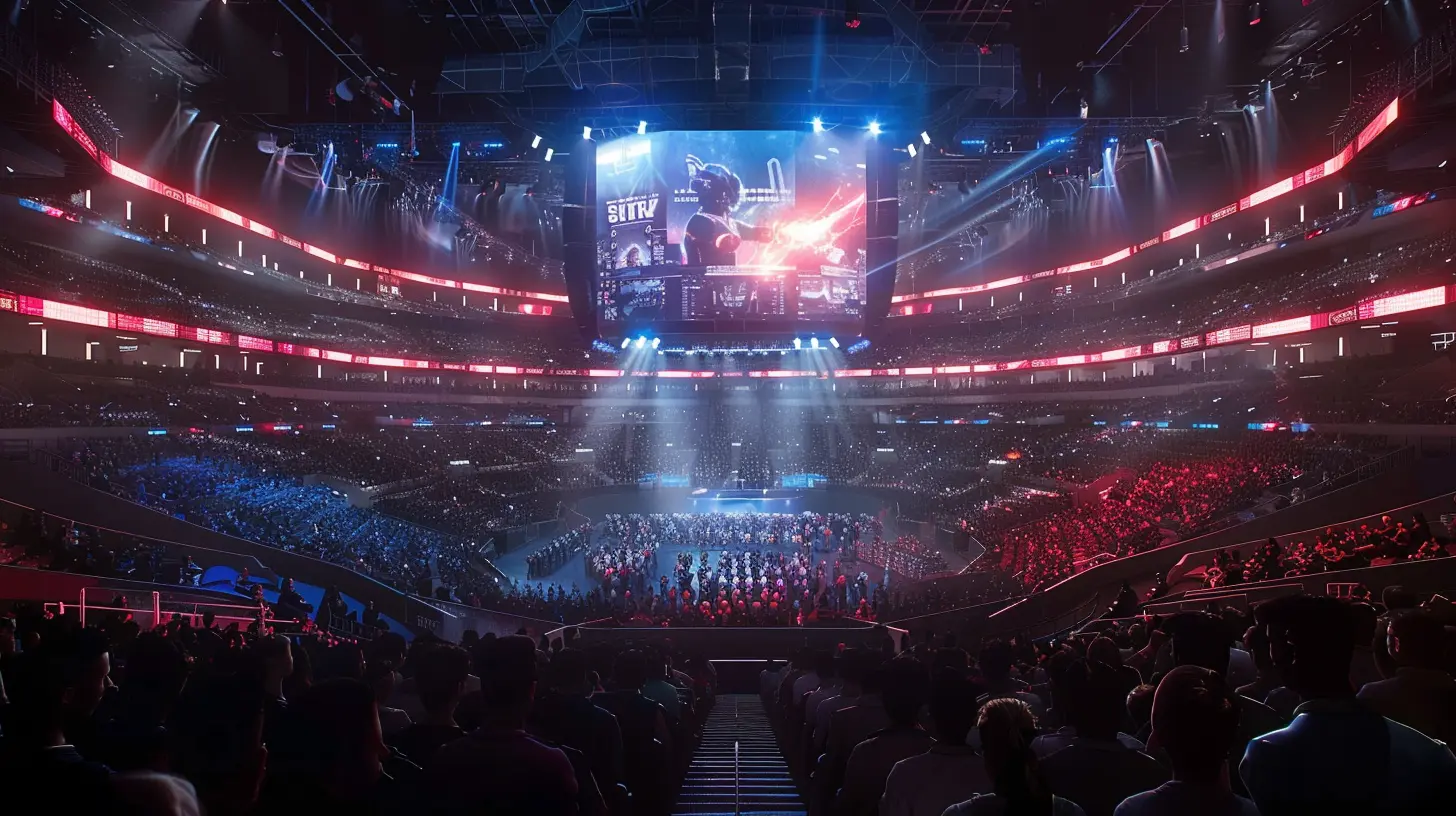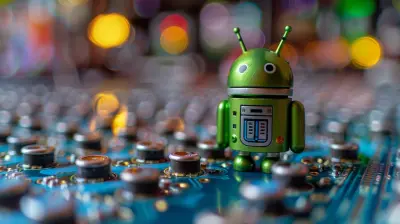Esports Arenas: How Tech is Enhancing the Live Experience
29 June 2025
Esports has skyrocketed in popularity over the past decade, transforming from small gatherings of passionate gamers into massive live events that fill arenas around the globe. If you've ever been to an esports event, you know that the atmosphere is electric. The crowds, the lights, the energy—it's all reminiscent of a traditional sports atmosphere. But there’s one key difference: technology plays a central role in shaping the live experience. And not just the kind of tech you'd expect, like gaming rigs and controllers. We’re talking about innovations that make esports arenas feel like something out of a science fiction movie.
In this article, we’re diving into how tech is enhancing the live esports experience. From augmented reality (AR) to real-time data analytics, esports arenas are tapping into cutting-edge technology to give fans something truly unique. So, whether you’re a die-hard esports fan or just someone curious about how technology is reshaping live events, buckle up—this is going to be a fun ride.

The Evolution of Esports Arenas
Let’s rewind for a second. The first esports events weren't held in flashy stadiums or arenas. They were small, grassroots gatherings, often hosted in internet cafes. But as esports gained mainstream attention, the demand for larger, more sophisticated venues grew. Over time, we started to see dedicated esports arenas pop up, like the Blizzard Arena in Los Angeles or the HyperX Esports Arena in Las Vegas.These venues have one primary goal: to create an immersive experience for both the players and the audience. And while traditional sports arenas focus on sightlines and seating, esports arenas are a whole different ball game. The tech integration is next level, and it’s all designed to keep you hooked from the moment you walk in until the final match is over.

Immersive Screens and Displays: A Visual Overload
Let’s start with something that hits you as soon as you enter an esports arena—the displays. Traditional sports rely on jumbotrons and scoreboards, but esports? They’ve taken it to a whole new level. We’re talking about massive LED walls that stretch from floor to ceiling, 360-degree screens, and augmented reality overlays that make you feel like you’re inside the game.If you’ve ever watched a League of Legends or Dota 2 championship finals, you’ve seen how these arenas use visual effects to enhance the experience. During the match, the giant screens not only display the in-game action but also provide real-time stats, player profiles, and instant replays. It’s like watching a video game on steroids, with every detail magnified and brought to life.
And it’s not just for the folks sitting front and center. Even if you’re way up in the nosebleed section, you’re still getting a killer view, thanks to the high-resolution projections and strategically placed screens around the arena. It’s immersive, dynamic, and constantly evolving throughout the event.

Augmented and Virtual Reality: Blurring the Lines Between Reality and the Game
Augmented reality (AR) and virtual reality (VR) are playing a huge role in making esports arenas more interactive and engaging. AR is particularly popular during live broadcasts and in-arena experiences. Imagine watching a match and suddenly seeing a life-size 3D dragon from League of Legends appear on the stage. It’s not real, but you’d swear it was. That’s the power of AR.AR overlays are often used to enhance the storytelling of the game. For example, when a major move happens—like a character using an ultimate ability—AR effects will light up the arena, making the whole venue feel like it’s part of the game itself. It’s an experience that’s hard to replicate at home, which is why so many fans are flocking to these live events.
On the VR front, some esports arenas are experimenting with virtual reality setups that allow fans to “step inside” the game. While VR is still in its infancy in live arenas, it's not hard to imagine a future where you can put on a headset and experience the game as if you were one of the players. That’s not just watching a game—that’s living it.

Real-Time Data and Analytics: More Than Just a Scoreboard
In traditional sports, you’ve got your scoreboards showing the basics: points, time remaining, and maybe a few player stats. But in esports, the data goes way deeper. And thanks to tech advancements, fans are getting real-time access to this data in a way that’s never been possible before.Esports arenas have embraced real-time analytics to enhance the fan experience. Whether it’s tracking the damage dealt, the gold earned, or the number of eliminations, fans are kept in the loop with dynamic stat updates that appear on screens throughout the arena. Some venues even offer interactive apps that allow you to customize which stats you want to follow.
But it’s not just about numbers. These arenas also use AI-driven data to predict outcomes, highlight key players, and provide context on why certain strategies are important. In a way, it’s like having a color commentator in your pocket, giving you insights that go beyond the surface-level action.
High-Speed Internet Infrastructure: Because Lag is the Enemy
We can’t talk about tech in esports arenas without mentioning the backbone of it all: the internet. Esports relies on low-latency, high-speed connections, both for the competitors and the fans. You can't have a seamless gaming experience with lag, and the same goes for live events.Esports arenas are outfitted with state-of-the-art internet infrastructure to ensure that everything runs smoothly. We're talking about fiber-optic connections, advanced routers, and multiple redundancies so that there’s no downtime. For fans, this means you can livestream, post on social media, and stay connected without a hitch. For players, it means no lag spikes, no disconnects—just smooth, uninterrupted gameplay.
Some arenas even offer audience members access to high-speed internet for in-arena competitions and fan engagement activities. Want to play a round of Fortnite during halftime? You can, and you won’t have to worry about your ping.
Lighting and Sound Design: Creating the Right Atmosphere
Lighting and sound design might not be the first things that come to mind when you think about tech in esports arenas, but they play a huge role in setting the tone. If you’ve ever been to an esports event, you know that the lighting changes with the game’s pace. When the stakes get high, the lights dim, focusing all attention on the players. When a big play happens, the lights flash, and the entire arena erupts in a synchronized spectacle.Sound design is equally important. The sound system in esports arenas is often tailored to enhance the in-game audio. Think of it like a concert: you want the bass to hit just right, but in esports, it's more about making those in-game sounds—like footsteps, gunshots, or character abilities—feel larger than life. Some arenas even use spatial audio to give fans a 360-degree sound experience, immersing them in the action no matter where they’re seated.
Interactive Fan Zones: Bringing the Community Together
Another tech-driven feature that’s making esports arenas stand out is the introduction of interactive fan zones. These are areas within the arena where spectators can engage with the event on a whole new level. Some arenas feature dedicated zones equipped with the latest gaming PCs and VR setups, where fans can try out the games themselves.Others offer social media integration, where you can post about the event in real-time, and your posts will appear on big screens for everyone to see. Some venues even feature AR-enhanced scavenger hunts or mini-games that fans can participate in during event breaks. It’s not just about watching the game; it’s about being part of a community and creating memories beyond the main event.
Sustainability Tech: Eco-Friendly Arenas for a Greener Future
As esports continues to grow, so does the responsibility to create sustainable, eco-friendly arenas. Many esports venues are leading the charge by integrating sustainability-focused technologies. Some arenas are using energy-efficient LED lighting, while others are powered by renewable energy sources like solar panels.Recycling and waste management systems are also getting a tech upgrade, with smart bins that automatically sort waste and track the arena’s environmental impact. It’s not just about providing an amazing fan experience; it’s about ensuring that esports events are future-proof and responsible.
The Future of Esports Arenas: What’s Next?
So, what’s next for esports arenas? Well, the sky's the limit. With 5G becoming more widespread, we can expect even faster internet speeds and more real-time interaction between fans and the game. We’ll likely see more advanced uses of AR and VR, making the line between the digital and physical worlds blur even more.There’s also the potential for AI-driven fan experiences. Imagine an AI that can suggest optimal seating based on your gaming preferences or provide you with tailored content during the event. As esports continues to evolve, so will the tech that supports it.
In short, esports arenas are more than just places to watch games—they are high-tech hubs designed to immerse you in the experience. With every match, every event, and every advancement in technology, these arenas are pushing the boundaries of what’s possible in live entertainment.
all images in this post were generated using AI tools
Category:
EsportsAuthor:

Michael Robinson
Discussion
rate this article
2 comments
Elin Blair
In vibrant arenas, where pixels dance and passions ignite, technology weaves a tapestry of thrill. Amplified cheers, stunning visuals, and seamless connections elevate the game, transforming every match into an unforgettable live symphony of esports.
September 29, 2025 at 12:13 PM

Michael Robinson
Thank you for capturing the essence of how technology elevates the esports experience! Your vivid imagery truly reflects the excitement and energy of live events.
Ariadne Rios
Immersive tech transforms fandom.
July 11, 2025 at 3:46 AM

Michael Robinson
Absolutely! Immersive tech enhances engagement and connection, elevating the entire fan experience in esports arenas.


